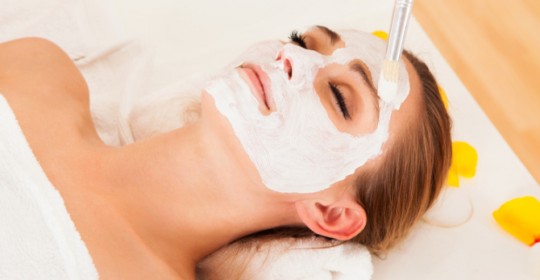
Chemical Peeling
Chemical peeling is a technique used to improve the appearance of the skin. A chemical solution is applied to the skin which causes it to separate, peel off, and allows new skin to regenerate. The new skin is smoother and less wrinkled than the old skin, and may also be more even in color.
Today, with the public’s increasing interest in rejuvenating skin and slowing the effects of the aging process, chemical peeling has emerged as an exciting anti-aging procedure. Results of chemical peels may also be enhanced by new laser/light-based rejuvenation techniques. A thorough evaluation by your doctor is necessary before choosing a chemical peel program.
What can a chemical peel do?
Chemical peeling is used to treat fine lines, especially under the eyes and around the mouth. Wrinkles caused by sun damage, aging, and hereditary factors can be reduced or even eliminated with this procedure. However, sags, bulges, and more severe wrinkles do not respond to peeling and may require other kinds of cosmetic surgical procedures. A dermatologist can help determine the most appropriate type of treatment for each individual case.
Mild scarring and certain types of acne may also be treated with chemical peels. In addition, pigmentation of the skin in the form of sun spots, age spots, liver spots, freckles, blotchiness due to taking birth control pills, and skin that is dull in texture and color may be improved with chemical peeling. Areas of sun-damaged skin and scaling patches may improve after chemical peeling as well. Sunscreens and sun blocks must be used in conjunction with chemical peels in order to decrease the chance of the reappearance of lesions.
How are chemical peels performed?
The procedure may be performed on the face, neck, chest, hands, arms, and legs. Superficial, medium, or deep chemical peels may be used to improve damaged skin. As a rule, the deeper the peel, the longer the recovery time. Your doctor will recommend the best peel for your skin problems.
Prior to treatment, instructions may include stopping certain medications and preparing the skin with pre-conditioning creams.
A chemical peel is usually performed in a doctor’s office. The skin is thoroughly cleansed with an agent that removes excess oils, and the eyes and hair are protected. One or more chemical solutions such as glycolic acid, trichloroacetic acid, salicylic acid, lactic acid, or carbolic acid (phenol) are used. Yourdoctor will suggest the proper peeling agent based upon the type of skin damage present and desired results.
During a chemical peel, the physician applies the solution to various areas of the skin. These applications produce separation and eventually peel off layers of skin, enabling rejuvenized skin to appear.
During the procedure, most patients experience a warm to hot sensation that may last about five to ten minutes, followed by a stinging sensation. A deeper peel may be more painful and require medication during or after the procedure.
What should be expected after treatment?
Depending upon the type of peel, there may be a mild to severe sun burning sensation. Superficial peeling usually involves redness, followed by scaling that lasts three to five days.
Medium-depth and deep peeling can sometimes result in swelling and blisters that may break, crust, turn brown, and peel off over a period of 7 to 14 days or longer. Some peels may require surgical tape to be placed on part or all of the skin that is treated.
It is important to avoid overexposure to the sun immediately after a chemical peel since the new skin is fragile and more susceptible to injury. Your doctor will prescribe appropriate follow¬up care to help the skin heal.







Most Commented